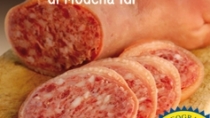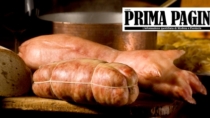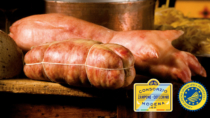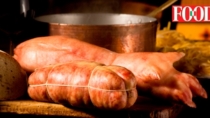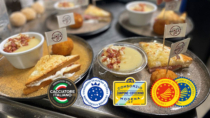Description
Cotechino Modena PGI is a charcuterie product made with a mixture of pig meat stuffed in a casing.
Production Area
The production area of Cotechino Modena PGI is within the entire Emilia-Romagna region; the provinces of Cremona, Lodi, Pavia, Milan, Monza-Brianza, Varese, Como, Lecco, Bergamo, Brescia and Mantua in the Lombardy region; the provinces of Verona and Rovigo, in the Veneto region.
Production Method
Cotechino Modena PGI is made from a mixture pig meat obtained from striated muscles, pork fat, rind, salt and whole and/or ground pepper. The preparation of Cotechino Modena PGI must be carried out by mincing the meat in a grinder, with moulds that have holes of a 7-10 mm diameter for the muscular parts, and 3-5 mm for the rind. This process may be preceded by coarse grinding. All of the ingredients are mixed together in a vacuum or atmospheric pressure machine, after which the mixture is inserted into natural or artificial casings. When the product is sold fresh, it must be dried in a hot air stove, whereas it can be pre-cooked in water if it is sold as a cooked product.
Appearance and Flavour
Cotechino Modena PGI has a cylindrical shape and should be easy and tender to slice. On cutting, the slices should be firm, with uniform grain and a pinkish colour, characterised by redder areas. It has a characteristic flavour.
History
The origins of Cotechino Modena PGI date back to 1511, when the inhabitants of Mirandola, under siege by the army of Pope Julius II della Rovere, had to find a way to preserve the pig meat. They decided to slaughter the pigs in order to save them from the pillage, inserting the meat into casings and thereby creating Cotechino. The product was a great success and during the 18th century it spread into neighbouring markets, also thanks to the increased production of Frigeri and Bellentani, two of the oldest charcuterie shops in the area.
Gastronomy
Fresh Cotechino Modena PGI should be kept in the refrigerator, while the pre-cooked version can be stored at room temperature for a longer period of time, as it is packaged in airtight containers that undergo heat treatment. Fresh Cotechino Modena PGI needs to be cooked for a long time before being consumed, whereas the pre-cooked version has a much shorter cooking time, generally between 15 and 20 minutes. This product is traditionally eaten over the Christmas period and on New Year’s Eve. It is served in fairly thick slices with lentils and stewed beans, as well as with mashed potatoes or spinach with butter and Parmigiano Reggiano PDO. It also goes well with winter vegetables, such as cabbage. It should ideally be paired with sparkling red wines, such as Lambrusco PDO wines from Modena.
Marketing
The product is marketed as Cotechino Modena PGI. It is sold fresh, both packaged and unpackaged, or pre-cooked, packaged in appropriate air-tight containers. In both cases, it is sold whole with a weight that usually ranges from 400 g to 600 g.
Distinctive Features
Cotechino Modena PGI is an ancient food, but has nutritional properties which meet today’s needs: it is rich in first class proteins, B group vitamins and minerals; it only contains natural flavours; and it is lactose-free, with no added glutamate. Furthermore, despite common belief, it is low in calories, as part of the fat disperses during cooking.





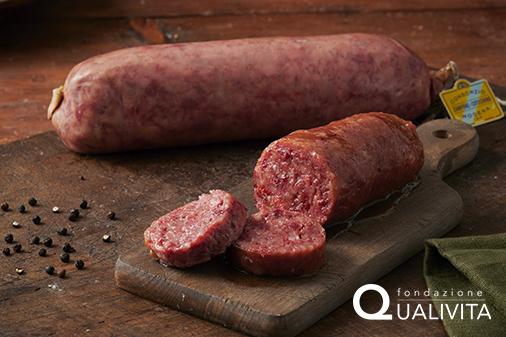
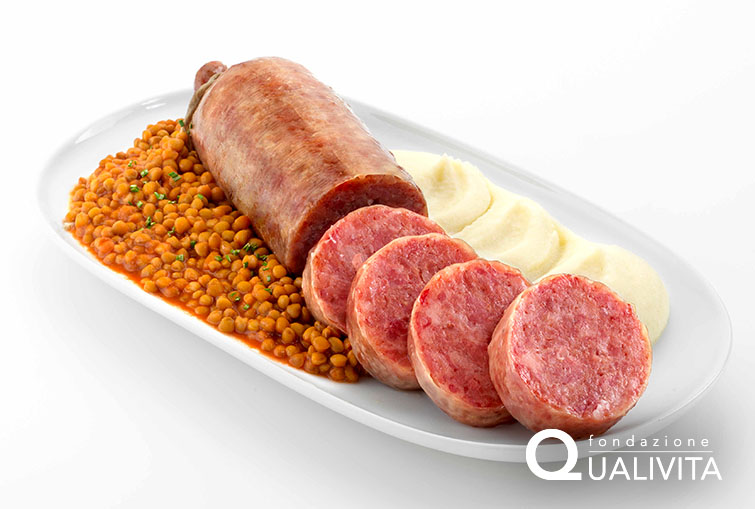
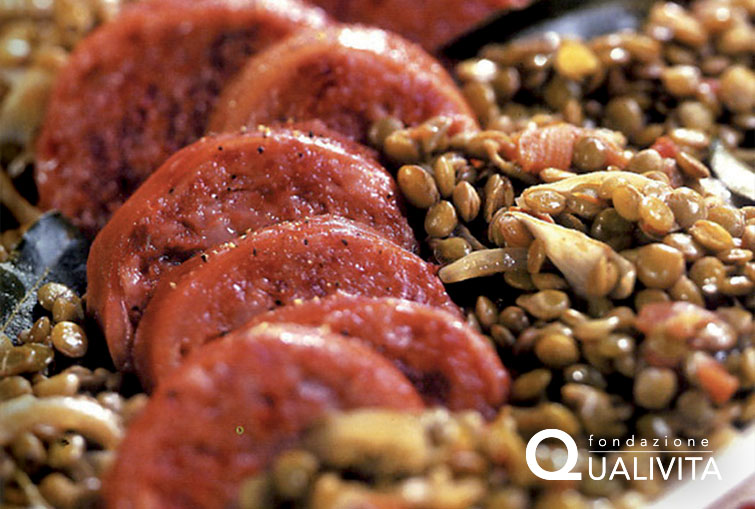
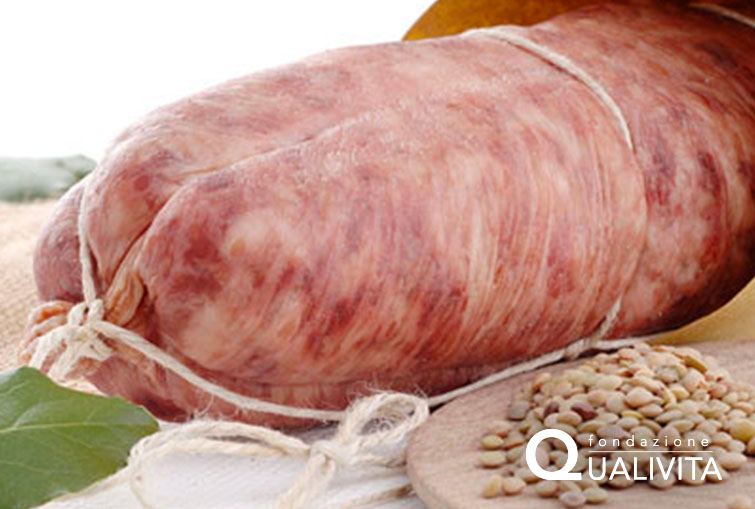
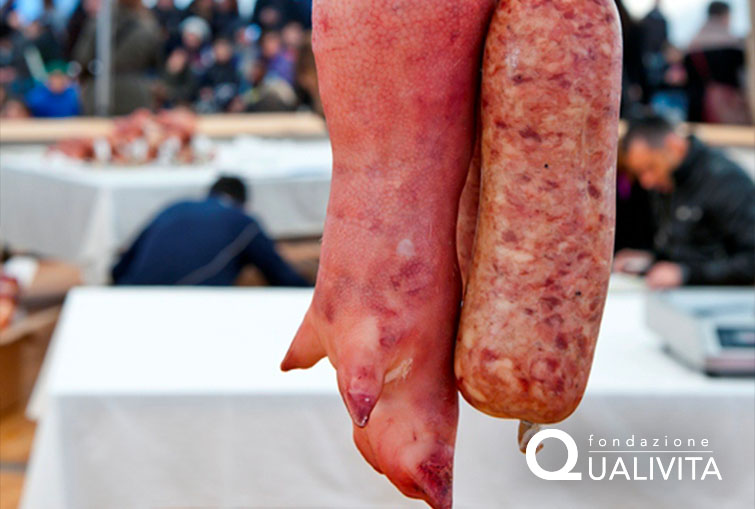
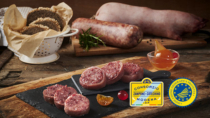

![[Modena] 13° Festa dello Zampone e del Cotechino Modena IGP](https://www.qualivita.it/wp-content/uploads/2023/12/Zampone-e-del-Cotechino-Modena-IGP-Gli-Chef-di-domani-210x118.jpg)
